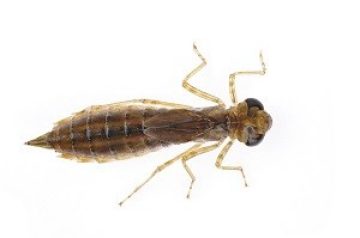FOR IMMEDIATE RELEASE

“A National-Scale Assessment of Mercury Bioaccumulation in United States National Parks Using Dragonfly Larvae As Biosentinels through a Citizen-Science Framework”
Environmental Science & Technology
Various forms of mercury are released naturally by volcanoes and weathering of rocks and soil. Human activities, such as mining or burning fossil fuels, can also release the element into the environment, where aquatic microbes can convert it into the toxic form, methylmercury. Now, researchers reporting in ACS’ Environmental Science & Technology have shown that dragonfly larvae, collected from national parks as part of a citizen-scientist engagement program, can serve as sentinels for mercury bioaccumulation.
High levels of methylmercury can cause cardiovascular and neurological problems in people and impair reproduction in fish and other wildlife. Sentinels are organisms used to detect risks to humans from environmental hazards. So, by monitoring total mercury and methylmercury levels in sentinels, scientists can have an early warning system for when levels get dangerously high. But finding an ideal sentinel for monitoring mercury nationwide has been tricky –– the same fish or aquatic birds are not found at every body of water, and collecting these animals for analysis can raise logistical, regulatory and ethical concerns. Collin Eagles-Smith and colleagues wondered if dragonfly larvae would be good sentinels. These bugs live in diverse freshwater habitats across the globe, and methylmercury accumulates in their tissues. They are also relatively easy to collect and identify, making them suitable for citizen science.
From 2009 to 2018, more than 4,000 citizen-scientists helped collect almost 15,000 dragonfly larvae from more than 450 sites in 100 national parks across the U.S. The researchers analyzed the samples for total mercury and a subset of samples for the methyl form. Elevated total mercury concentrations were found at several parks, but the levels in dragonfly larvae varied by more than a hundredfold among different sites. Mercury concentrations were higher in larvae from rivers and streams than in larvae from lakes and ponds, and larvae from water bodies that were surrounded by wetlands had much higher concentrations than larvae from water bodies that weren’t. The mercury concentrations correlated with those in fish and amphibians at the same locations –– enabling development of a tool to predict mercury in other species using dragonfly larvae. About 12% of the places sampled had mercury levels that were considered high and potentially detrimental to fish, wildlife or human health, the researchers say.
For more information on the ongoing Dragonfly Mercury Project, click here.
The authors acknowledge funding from the National Park Service, the U.S. Geological Survey, the University of Maine, the National Park Foundation and the National Institute of Environmental Health Sciences.
To automatically receive press releases from the American Chemical Society, contact newsroom@acs.org.
Note: ACS does not conduct research, but publishes and publicizes peer-reviewed scientific studies.
Note: ACS does not conduct research but publishes and publicizes peer-reviewed scientific studies.




